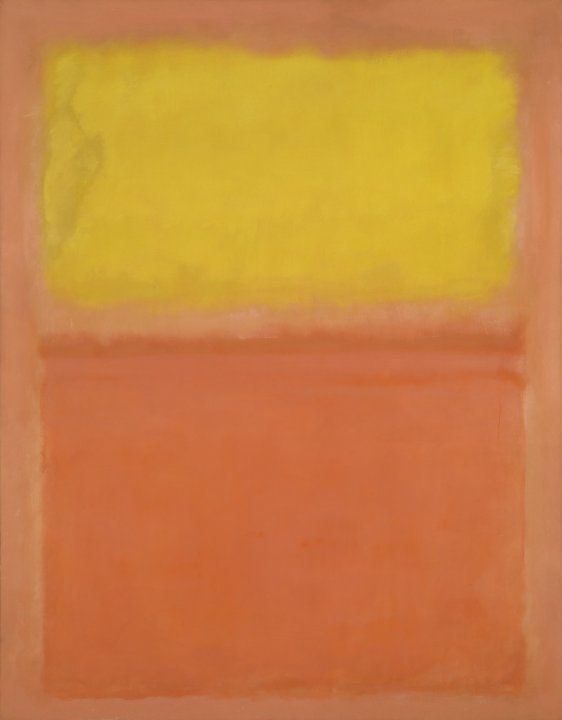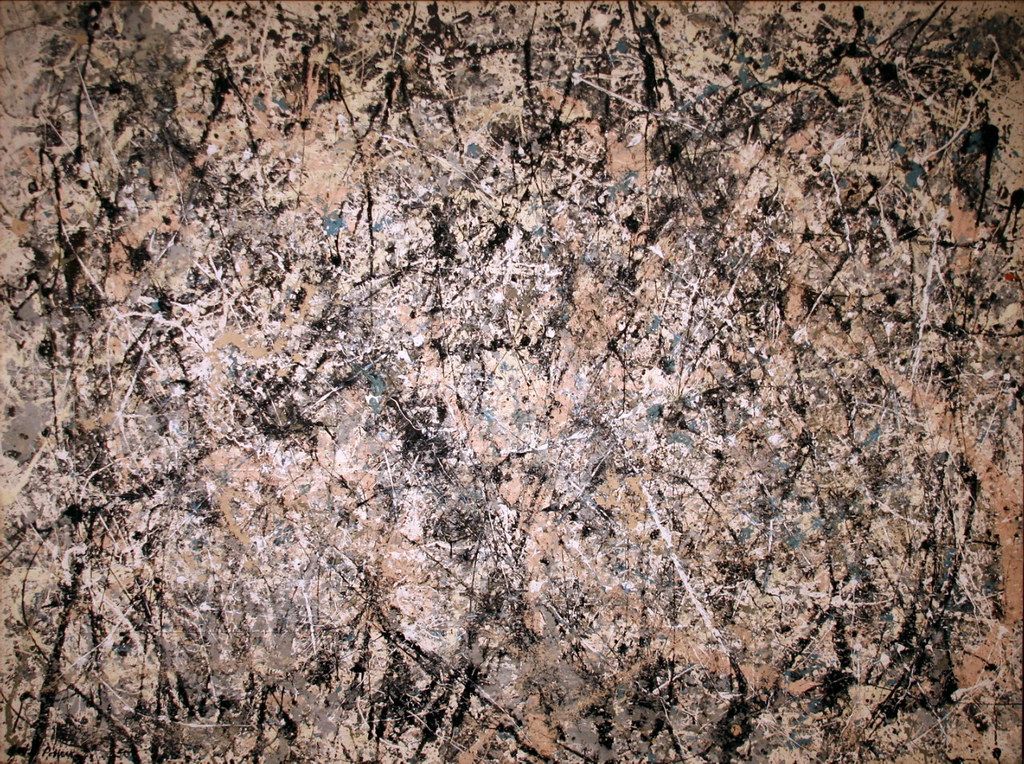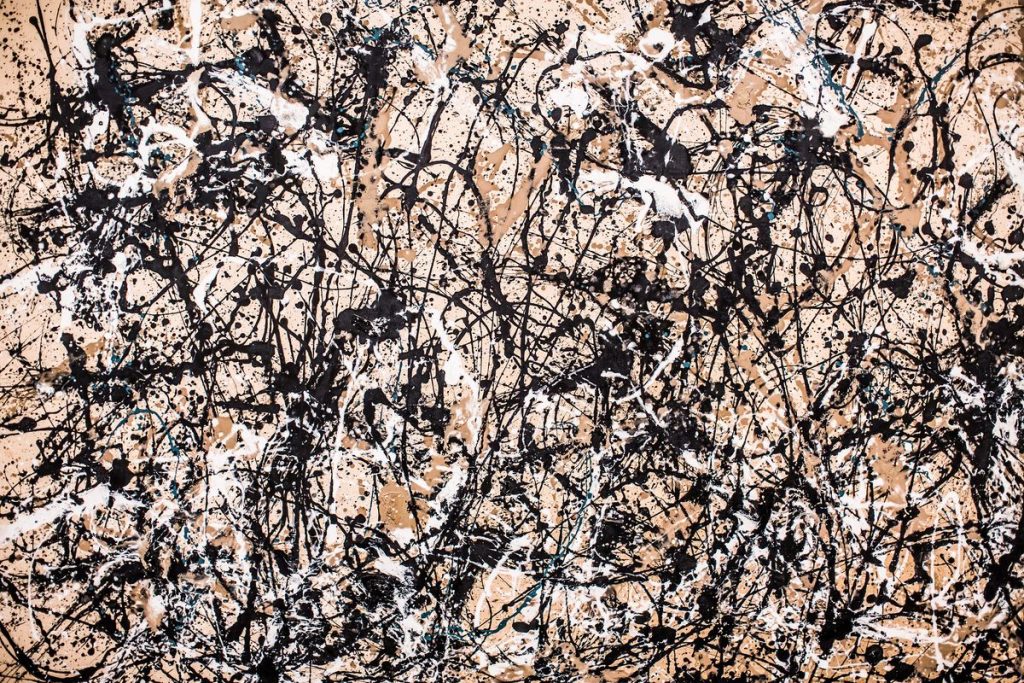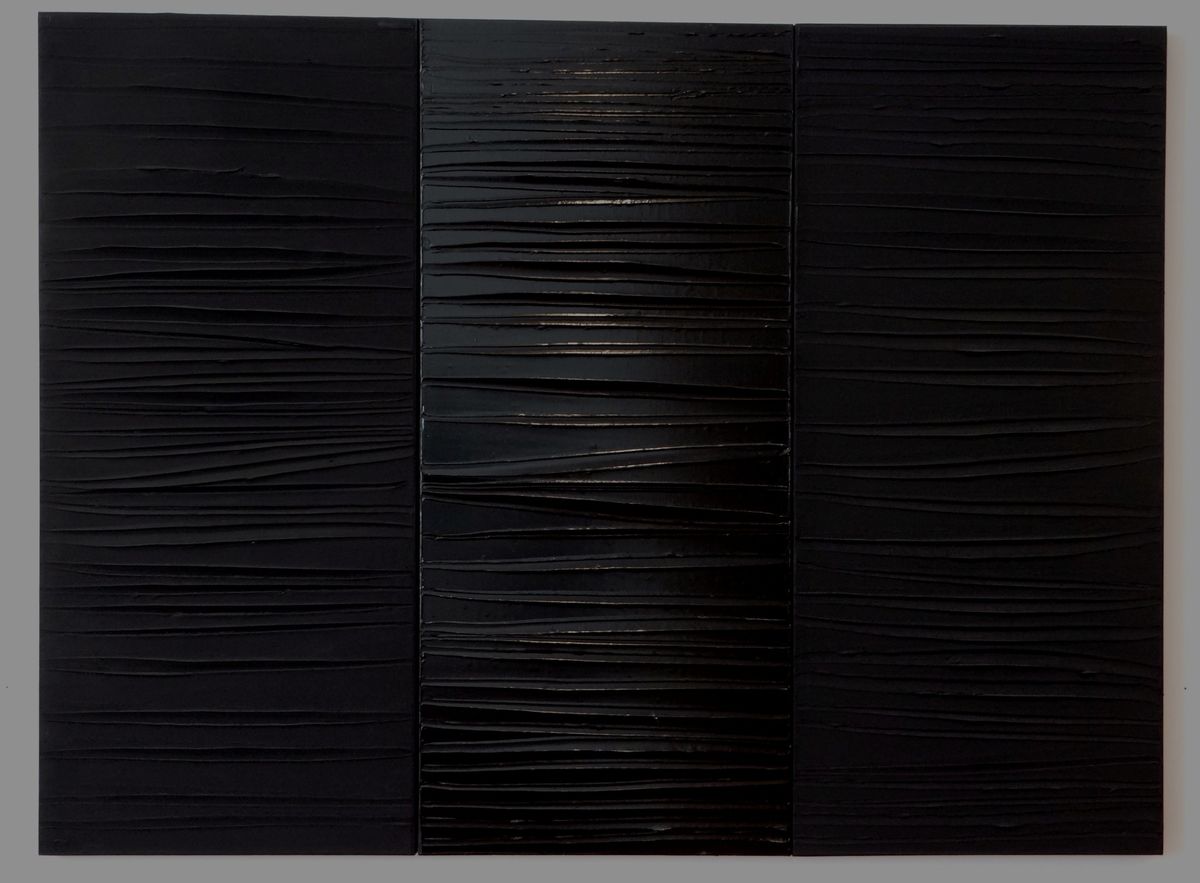


They were abstract painters (their paintings did not represent observable reality) who gave birth to the first 100% American movement.
The movement they belong to was called “Abstract Expressionism”. In fact, it had two branches:

Abstract Expressionism, which is divided between action painting and colorfield painting, was an artistic movement born in the United-States.
When Rothko created his works, he wanted to offer the viewer an experience. This is the sort of ambitious programme that will only work with the visitor’s consent.
With this painting dating from 1956, which is one of the most famous, the viewer must agree to plunge into the painting and its broad zones of colour with blurred edges in order to really feel what Rothko wanted to communicate.
This is why this artistic movement bears the name Abstract Expressionism: it expresses an emotion through abstract art.


Through his painting and abstract areas of colour, Rothko sought to create an emotional experience.


Jackson Pollock, Number One (Lavender Mist)
1950, oil, enamel and aluminium on canvas, 87 x 118 inches, National Gallery of Art, Washington D.C. © ADAGP, Paris 2021. Photo: Cliff, CC BY 2.0

Jackson Pollock, Autumn Rhythm (Number 30)
1950, enamel on canvas, 105 x 207 inches, Metropolitan Museum of Art, New York © ADAGP, Paris 2021. Photo: Thomas Hawk, CC BY-NC 2.0


Pollock, one of the pioneers of Abstract Expressionism, was known for his way of painting and his all over technique.
Jackson Pollock is famous for his highly individual technique.
It is said that he got this idea by watching Amerindians from the Navajo people create works of art from sand, on the ground. This was one of Pollock’s great inventions: instead of placing his canvas in front of him, on an easel, he put it on the ground.
Then, using a paintbrush, a brush handle or even a stick, he threw drops and streaks of paint onto the canvas. This technique is known as dripping. As a reminder of where his inspiration came from, he moved around like an American Shaman would dance.
Jackson Pollock painting “Blue poles”, 1952, by Alison Chernick © ADAGP, Paris 2021

Pollock’s dripping technique, based on throwing paint onto the canvas, was inspired by Amerindian practices.
18 painters signed the “Irascibles’ ” Letter to the Metropolitan Museum in defence of modern painting, but 10 sculptors with the same point of view also signed it.
The most famous of all these names was that of Louise Bourgeois. This French-born artist had been close for a while to Abstract Expressionists or Surrealists, but in reality, her art was undefinable.
To create her sculptures, she especially drew on her own story. Her dominant father, who humiliated her, often appears in the form of male genitals, and her mother, who appears as a positive figure, as giant spiders.


The sculptress Louise Bourgeois produced works especially drawn from her personal experience, like spiders, to represent her mother.
In France, Pierre Soulages is often compared with artists who practiced action painting. In his abstract paintings, gestures are indeed an important part.
Throughout his career, Soulages left aside colours, all except black, which he kept. By using his brush to streak his canvases with paint, or a blade for a smooth effect, he created surfaces that trapped the light as a sculpture would do.
Soulages’ paintings may have been entirely black, but they were radiant. Soulages often called them his outrenoirs: works beyond black.


The outrenoirs painted by Pierre Soulages were completely black paintings that played on the thickness of the paint and the light.
Soulages was over 100 in 2020 and had begun his career at the same time as the Abstract Expressionists. He can therefore not be considered a successor of this movement.
In that case, who could hold this role today? Gerhard Richter, without a doubt because, like Pollock and his action painting colleagues, he thought about the importance of gestures in painting.
However, to reduce Richter’s work to this single facet of his art would be a misunderstanding of its breadth. Like Picasso before him, this German artist never restricted his work to a style or a method: he constantly re-invented it and continued to do so.

Gerhard Richter took an interest in the importance of the gestures involved during the creation of a work of art but did not attach importance to a single gesture.

"*" indicates required fields